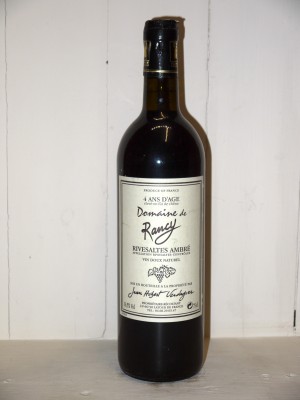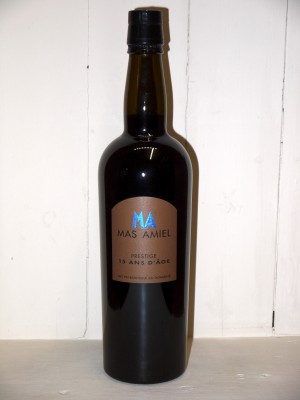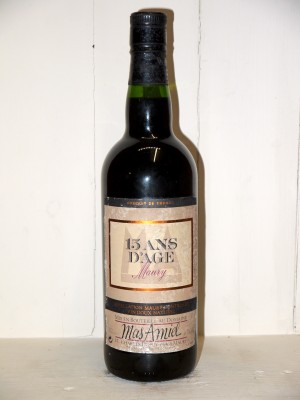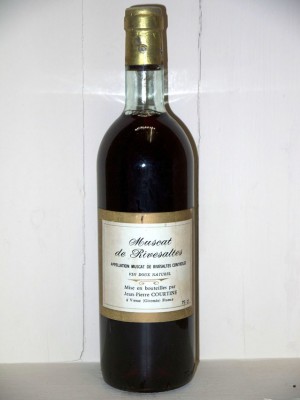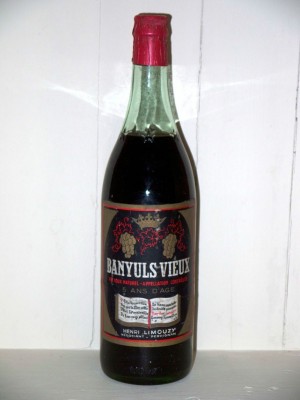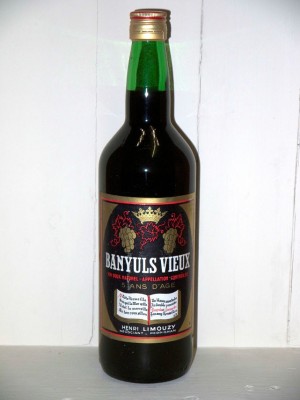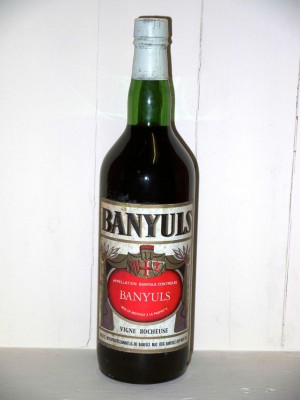No products
Last blog articles
Appellation Other regions
Catalog
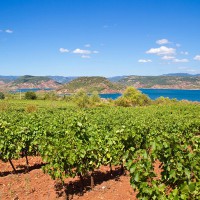
Grands vins - Languedoc-Roussillon
These two regions alone produce more than a third of the french production. Their wines, including sweet natural wines, are very high-quality and highly sought-after by wine lovers.
The three most important appellations of the Langudoc are : Corbières,...
These two regions alone produce more than a third of the french production. Their wines, including sweet natural wines, are very high-quality and highly sought-after by wine lovers.
The three most important appellations of the Langudoc are : Corbières, Coteaux-du-Languedoc and Minervois. Roussillon is the symbol of sweet natural wines with its exceptional production and skilled winemakers.
Languedoc
Appellation of 9500 ha, spread over every appellation areas from Languedoc and Roussillon, producing a wide range of wines from the three colors. Named Coteaux-du-Languedoc before 2007, it is divided into geographical denominations matching a particular terroir : La Clape, Picpoul-de-Pinet, Pézenas, Grès de Montpellier, Terrasses du Larzac, Pic-Saint-Loup, Terrasses de Béziers, Terre de Sommières. The following geographical denominations may appear on labels : Cabrières, La Méjanelle, Montpeyroux, Quatourze, Saint-Christol, Saint-Drézéry, Saint-Georges-d’Orques, Saint-Saturnin and Vérargues.
Main grape varieties : Grenache noir, syrah, mourvèdre, cinsaut, carignan, lledoner for red wines and rosés ; grenache blanc, clairette blanche, bourboulenc, picpoul blanc, roussane, marssane, rolle, viognier for white wines.
Soils : Limestone, schist, gravel.
Style of wines :
Red wines : depending on the vinification method (traditional or with carbonic maceration), the wines are either complex, concentrated and tannic with notes of leather, dried fruits and mineral scents, or supple and light with notes of spiced red fruits.
White wines : aromas of white and yellow flowers with notes of honey, spices and garrigue for these delightful, fresh and flavorful white wines.
Rosés : floral and fruity aromas for these round and supple rosé wines.
Corbières
Appellation of 12 850 ha with vines located between Carcassonne, Narbonne, Perpignan and Quillan, producing a majority of various high-quality red wines. 11 terroirs are included, resulting in a wide variety : Montagne d’Alaric, Saint-Victor, Fontfroide, Quéribus, Boutenac, Termenès, Lézignan, Lagrasse, Sigean, Durban, Serviès. Since 2005, Boutenac has its own appellation.
Main grape varieties : Grenache, syrah, mourvèdre, carignan, cinsaut for red wines and rosés ; grenache blanc, bourboulenc, maccabeu, marsanne, roussane, vermentino for white wines.
Soils : Schist, limestone, sandstone, marl.
Style of wines :
Red wines : aromas of black fruits, spices and macerated fruits with notes of garrigue for these tannic, concentrated, powerful and fragrant wines with a beautiful persistance in the mouth. They develop notes of coffee, cocoa, undergrowth, humus and game with age.
White wines : nose of white flowers and exotic fruits for these fine, delicate and round white wines.
Rosés : fruity, aromatic and powerful wines.
Minervois
Appellation of 4178 ha with vines surrounded by the Canal du Midi to the south and the Black Moutain to the north, producing a wide range of well-balanced, delightful wines with excellent value for money and fit for ageing. The first « village » appellation of the Languedoc, Minervois-La Livinière, was created on this territory.
Main grape varieties : Syrah, mourvèdre, grenache, carignan, cinsaut, terret noir, picpoul noir for red wines and rosés ; maccabeu, bourboulenc, clairette, grenache, vermentino, muscat for white wines.
Soils : Terraces of stones, sandstone, schist, limestone.
Style of wines :
Red wines : Intense garnet red color. Aromas of red and black fruits, notes of spices, liquorice and violette for these robust and tannic wines with a beautiful lenght in the mouth.
White wines : aromas of white and exotic fruits for these fresh and well-balanced white wines.
Rosés : fresh and robust wines.
Côtes-du-Roussillon, Côtes-du-Roussillon-villages
Regional appellation of 5000 ha with vines spread over Roussillon, producing wines from the three colors. The Côte-de-Roussilon-villages produced red wines exclusively with excellent value for money. The Caramany, Latour-de-France, Lesquerde and Tautavel villages have the right to add their name to the appellation on labels.
Main grape varieties : Carignan, grenache noir, mourvèdre, syrah, lledoner for red wines and rosés ; maccabeu, grenache blanc, malvoisie, marsanne et roussane for white wines.
Soils : Granit, schist, limestone.
Style of wines :
Côtes-du-Roussillon :
Red wines : aromas of wild fruits and a beautiful minerality for these robust and generous red wines.
White wines : aromas of flowers and woody notes for these delicate and delightful wines.
Rosés : powerful and fruity wines.
Côtes-du-Roussillon-villages :
Aromas of candied fruits and touches of vanilla for these complex and bright wines with a beautiful lenght in the mouth.
Rivesaltes
Most important appellation of the « vins doux naturels » AOCs (sweet natural wines) with 5400 ha of vines spread over Roussillon and the Corbières territory, producing 300 000 hl of red and white wines with a very strong ageing potential. On labels, the « tuilé », « ambré » or « hors d'âge » mentions can be added to the appellation name. The Rivesaltes appellation is very different from the Muscat de Rivesaltes AOC, which produces a sweet natural white wine with delicious aromas.
Main grape varieties : Grenache (black, grey or white), maccabeu, malvoisie du Roussillon.
Soils : Schist, limestone, limes.
Style of wines :
When young, the Rivesaltes wines are round with fruity and candied aromas. Those with the « tuilé » mention let out aromas of soft spices, orange peel, cocoa, quince, coffee and walnut. The « hors-d'âge » wines are at least 5 years old but usually much older.
Maury
Appellation of 1700 ha with vineyards surrounded by the Rivesaltes and Côtes-du-Roussillon-villages appellations, producing 48 000 hl of great natural sweet wines. Two kinds of Maury are produced : first, the vintages or rimages bottled quickly post harvest, and second, the rancios which are volontarily oxidised in wooden barrels or canisters, subject to climatic variations. They have a very strong ageing potential.
Main grape varieties : Grenache noir (at least 75 %), grenache gris, grenache blanc, maccabeu.
Soils : Schists.
Style of wines : :
Maury vintage : exhilarating aromas of black and red fruits, and notes of chocolate for these smooth wines with pulpy tannins and a long finish in the mouth.
Maury rancio : light garnet color. Heady aromas of caramel, smoked, toasted, dried and candied fruits, walnut, coffee and cocoa for these seductive wines with a smooth and persistent taste.
Banyuls, Banyuls Grand cru
Historic appellation with vineyards spread on the edge of the Mediterranean sea, close to the spanish border, on steep terraces, producing 29 000 hl of natural sweet wines, including grands crus classés. These grands crus classés are exceptional wines which benefit from a 30-month breeding period. Two kinds of Banyuls are produced : first, rimages bottled quickly post harvest, and second, the rancios which are volontarily oxidised in wooden barrels or canisters, subject to climatic variations. They have a very strong ageing potential.
Main grape varieties : Grenache noir (50 % for Banyuls, 75 % for Banyuls Grand cru), grenache blanc, grenache gris, carignan, maccabeu.
Soils : Schists.
Style of wines :
Banyuls rimage : aromas of stone fruits, blackberry and blueberry for these seductive, suave wines with a beautiful persistance in the mouth. They develop roasted flavors of coffee, leather and chocolate, and toasted notes of walnut and caramel.
Banyuls rancio : roasted and complex aromas of chocolate, coffee and prune.
-
-
Rivesaltes appellation. Excellent preservation.
20,00 €In Stock -
-
-
-
-
-
-

 Grand cru, a wine as rare as it is prized
Grand cru, a wine as rare as it is prized
 Wine making and vinification
Wine making and vinification
 What is the difference between white wine, rosé wine and red wine?
What is the difference between white wine, rosé wine and red wine?
 Process of creating a bottle of wine
Process of creating a bottle of wine
 Rare and forbidden varieties in France
Rare and forbidden varieties in France
 Wine grape varieties : types and particularities
Wine grape varieties : types and particularities



